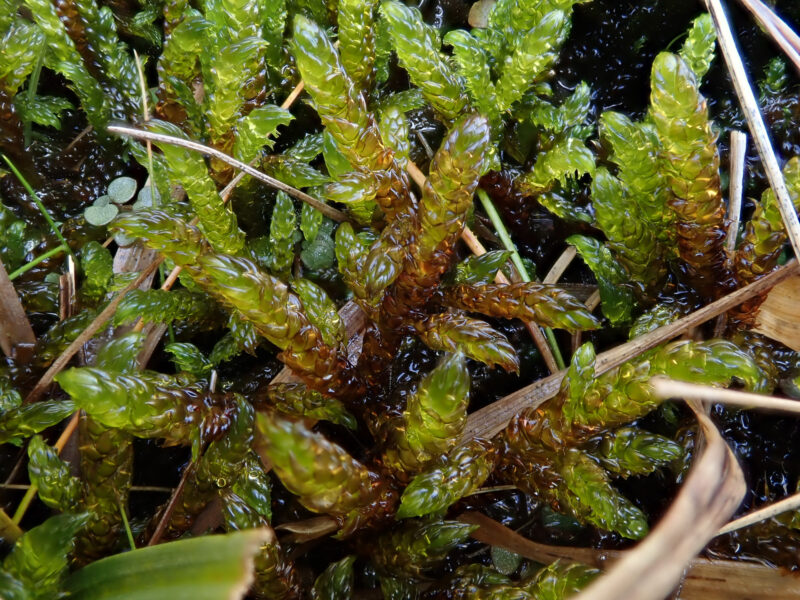Identification notes
Flushes, slow-flowing streams, dune-slacks and small pools often host a bewildering array of brownish pleurocarpous mosses with hook-shaped leaves. This particular moss is a welcome sight in such locations for two reasons. Firstly, it is very easy to recognize in the field, as will be described, and can even be spotted from a distance. Secondly, it is a sign of basic enrichment, and as such, alerts the vigilant bryologist to be on the lookout for interesting associates such as Sphagnum contortum and S. platyphyllum, other Scorpidiums and even such delights as Drepanocladus lycopodioides and D. sendtneri in the right conditions.
Calming down, let’s be sure of our identification. The shoots of the current species are sometimes described as being ‘fat and worm-like’, an undignified but fairly accurate description. Dark reddish-brown, and about 5mm wide they catch the eye as they can be 10 or 15cm long. The plants are therefore chunkier than the other species referred to initially. Individual leaves are about 3mm long, tapering, but not to a long, drawn-out point, nerveless and curved to one side. The combination of these features means that only rarely does one have to resort to the microscope for confirmation.
Read the Field Guide account







